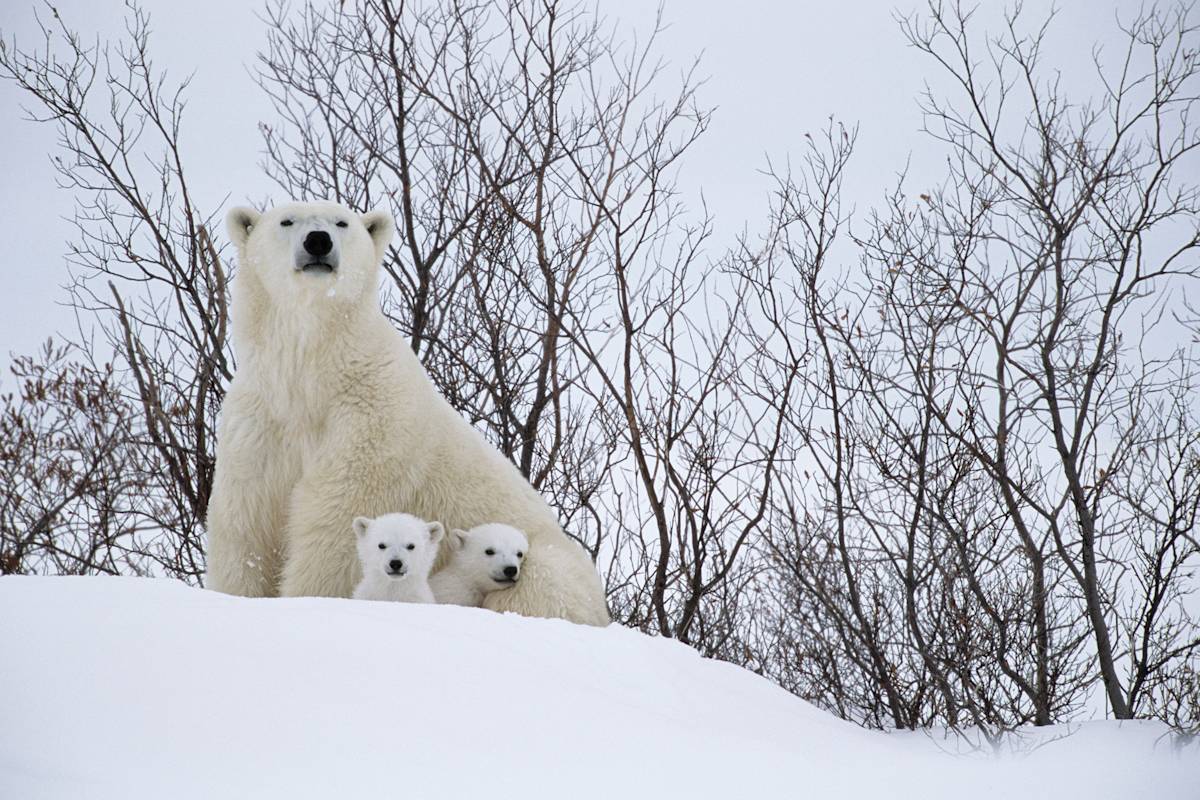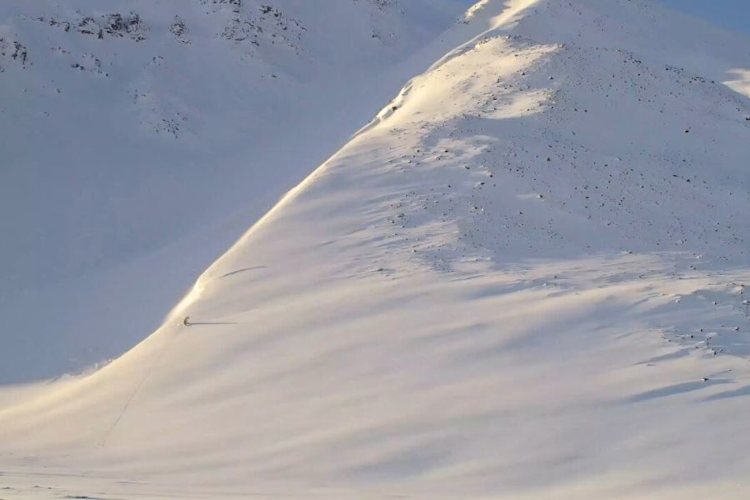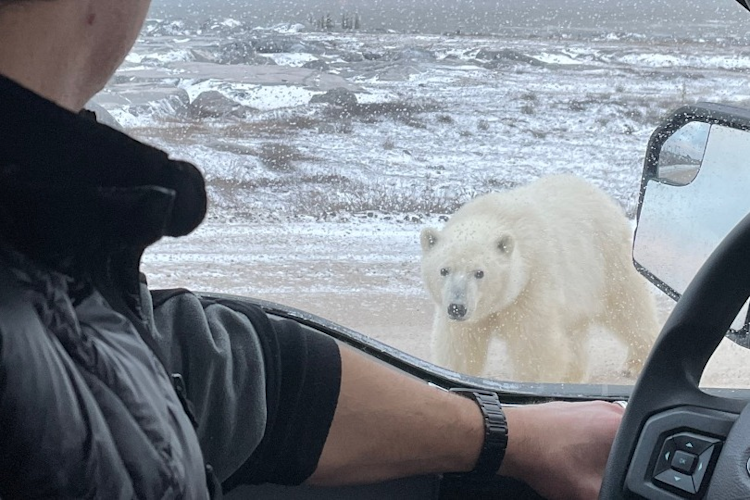Churchill, Manitoba -- February 27, 2023 -- For the 18th consecutive year, Polar Bears International (PBI), the only nonprofit organization dedicated solely to wild polar bears and their Arctic sea ice home, will host International Polar Bear Day to celebrate this special time of year when mother polar bears and their cubs are snug in their dens across the Arctic and to draw attention to the threats they face. This year the focus is protecting moms and cubs, giving them the best possible chance of survival, as denning is the most vulnerable time in a polar bear’s life. On average, less than half of all cubs reach adulthood, with even lower survival rates in the most vulnerable populations. In a warming Arctic, where polar bears already face enormous challenges, the survival of every cub is critically important. On February 27th, the group asks people to join them in taking action to protect polar bear families. Learn more about International Polar Bear Day here.
“We all want a better future for our children, and this International Polar Bear Day we’re calling on people to come together for a better world for future generations of polar bears and humans alike,” says Krista Wright, Executive Director of Polar Bears International. “By uniting and taking actions to protect polar bear families, we can help protect the entire Arctic ecosystem, which in turn impacts people around the world.”
Polar bear cubs are born in winter dens hidden under the snow. At birth, they are blind, weigh little more than one pound, and have only a light layer of fur to protect them from the cold. Families remain in the den until spring when the cubs are finally large enough to survive the rigors of outside Arctic conditions. Mother’s inability to successfully raise cubs contributed to the 40% decline of the Southern Beaufort Sea subpopulation between 2000-2010. Keeping moms and cubs safe, while also addressing climate warming, is a critical part of polar bear conservation.
Right now, scientists from Polar Bears International and partner organizations are in Svalbard, Norway, conducting research and working on den monitoring and detection technologies.
Polar Bear Research Currently Underway in Svalbard, Norway:
Maternal Den Studies:
Problem: Denning is the most critical time of a polar bear’s life, but one of the most difficult to study – one of the last mysteries of polar bear biology.
Solution: Researchers from Polar Bears International, the Norwegian Polar Institute, and the San Diego Zoo Wildlife Alliance are using remote, solar-powered cameras to noninvasively study key aspects of denning behavior for polar bears. They’re answering questions about the timing of den emergence, the condition of moms and cubs, and how sensitive they are to human disturbances – all helping managers and policymakers establish the best possible guidelines to protect moms and cubs.
Get involved: Read the Q&A and watch this video about maternal den studies
Den Detection:
Problem: The industry’s current den-detection tool (Aerial FLIR surveys)
misses 55% of dens
Solution: Scientists at Polar Bears International, Brigham Young University, Simon Fraser University, and NORCE are researching promising new den-detection methods that could greatly improve our ability to locate dens under the snow, helping to identify and protect denning areas to ensure the safety of moms and cubs. This is critically important as more industry and human activity move into the Arctic, threatening denning habitat and putting moms and cubs in harm’s way.
Get involved: Watch this video about den detection and donate here to help fund this critical research and other conservation efforts to give polar bear families a fighting chance.
Get Involved on International Polar Bear Day
Walk in the footsteps of…
Violet, a young polar bear mom. Premiering on February 27, the short film “Violet” follows a mom and her cubs through the remote, snowy slopes of Svalbard, Norway, and onto the sea ice. Tune into the premiere.
BJ Kirschhoffer, PBI’s Arctic tech mastermind. Watch the premiere of a “Day in the Life of BJ” on February 22, and venture with him into the wild beauty of Svalbard as he explores the potential of using radar technology to pinpoint den locations. Tune in.
Joanna Sulich, a Svalbard-based biologist who works on the Maternal Den Studies each year. In a “Day in the Life of Joanna,” learn about her incredible respect for polar bear moms and cubs as she sets up cameras in subzero mountain terrain. Tune in.
Join live chats with scientists on February 27:
Q&A on Polar Bear Moms and Cubs. Join PBI scientist Dr. Thea Bechshoft to learn about polar bear moms, cubs, and the denning period. Ask questions and see if you can stump the scientist! Happening on February 27 at noon ET.
Live from Svalbard! Join the PBI research team, streaming from Norway to chat about their work on PBI’s Maternal Den Study and life in the field. Tune in on February 27 at 2 pm ET.
Take the “Survive to 5 Challenge.” Did you know that the most vulnerable time in a polar bear’s life is from birth to adulthood at age 5? Start a “Survive to 5 Challenge Fundraiser” to help give cubs the best possible chance and invite 5 friends, family, and colleagues to take part. There will be prizes for the top three fundraisers.
Watch this video about PBI’s den-detection project, since protecting dens means protecting cubs.
Watch the Northern Lights Live Cam. As moms and cubs are snuggled in their dens, northern lights dance overhead. Enjoy the Northern Lights Live Cam from explore.org and Polar Bears International, streaming from the Churchill Northern Studies Center in Churchill, Manitoba, Canada – one of the best places on earth to view the aurora borealis.
Donate to protect moms and cubs. Your gift will help polar bear families, from better understanding the denning period to protecting moms and cubs from disturbances, all while addressing the overarching threat of climate change.
Spread the polar bear love:
Why act now? Recent polar bear news:
“Denning is the most vulnerable time of a polar bear’s life, with a cub being just about the size of a guinea pig when they’re born,” says Dr. John Whiteman, chief research scientist at Polar Bears International and assistant professor of biology at Old Dominion University. “Cub survival is crucial to species survival, and our team is currently in Svalbard, Norway, where we’re working with partners to develop innovations to protect dens. We’re proud to be collaborating on tangible solutions to identify, monitor, and protect dens, which is important given today's increasing human activity in the Arctic and our changing climate..”
About Polar Bears International
Polar Bears International’s mission is to conserve polar bears and the sea ice they depend on. Through media, science, and advocacy, we work to inspire people to care about the Arctic, the threats to its future, and the connection between this remote region and our global climate. Polar Bears International is the only nonprofit organization dedicated solely to wild polar bears and Arctic sea ice, and our staff includes scientists who study wild polar bears.The organization is a recognized leader in polar bear conservation. For more information, visit www.polarbearsinternational.org.
Media Contacts
Annie Edwards, for Polar Bears International
annie@fabricmedia.net
T: +44 07307 139782
Melissa Hourigan, for Polar Bears International
melissa@fabricmedia.net
T: +1 720-608-1919
















